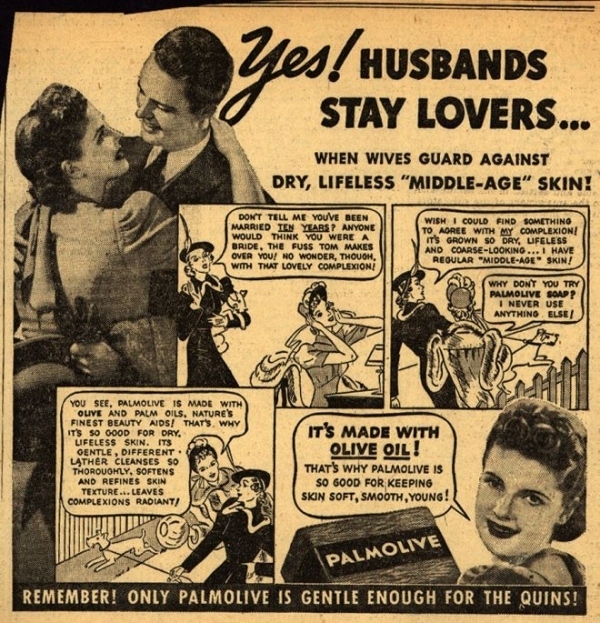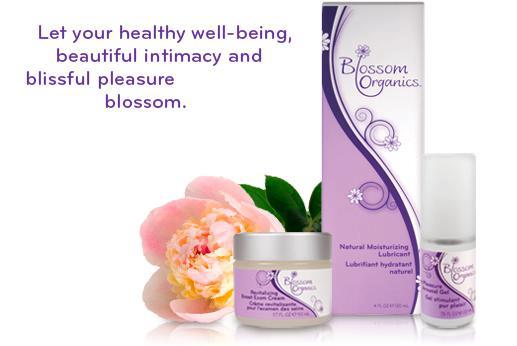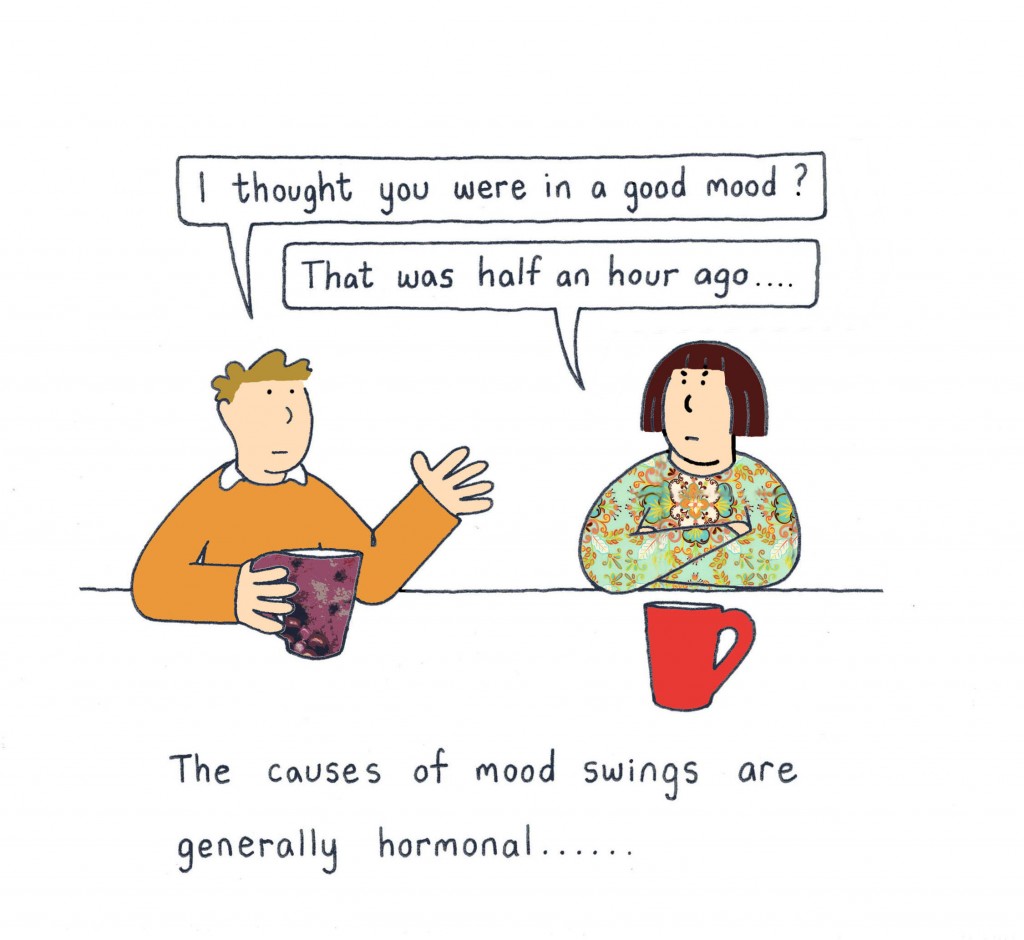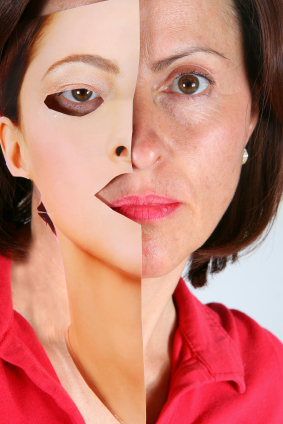Wednesday Bubble: Say what you will, but the way to a man’s heart is through your hands
Bet you thought I was gonna talk about something else, didn’t you?
Nope, it’s all about anti-aging, 1940s style. Funny thing is that nothing has really changed. Well, almost nothing.
Middle aged skin in the 40s is the same as middle aged skin in the ‘2012’s…except the solution.
Happy Wednesday!
Read More
Blossom into…pleasure
Freud started it; the driving force that makes us fulfill our most primitive urges, the pleasure principle. I’d like to think of it in a more positive light and I’m happy to say that the new line of intimate care products by Blossom Organics has my attention in the most wonderful way possible.
As we age and estrogen starts to wane, certain challenges may arise in our private areas, challenges like thinning vaginal tissue and lubrication issues. And although many things undoubtedly factor into and drive sexual desire, things like intimacy, our surroundings, daily stressors, our partners, our sense of purpose, vaginal dryness is real and for some women, may call for a little help. Mind you, I still don’t ascribe to the ‘silent suffering’ message that arose late 2010 when the International Menopause Society teamed up with Novo Nordisk to promote hormone therapy. But I do believe that knowing one’s options is critical to overall wellbeing and sexual health. Consequently, when the CEO of Blossom Organics wrote to ask me if I’d like to try their products, I thought to myself, ‘sure, why not?”
As I’ve gotten older, I’m finding that I am less inclined to use skincare and other products that are formulated with harsh chemicals. I’ve always had sensitive skin but as my hormones have changed, so have my skin tone, texture and reactions. Consequently, although I love trying new things, I typically end up with the old, especially when it comes to my more intimate areas. And while the organic label doesn’t always mean “better,” it often causes me to read the label to see exactly what that means.
In the case of Blossom Organics, it means intimacy without chemicals that may screw with your skin’s pH or cause other unpleasant reactions, chemicals such as parabens, artificial dyes, flavorings or fragrances. This doesn’t mean, however, that the products are entirely scent-free. In fact, I found the Revitalizing Breast Exam Cream, which contains coconut and almond milks and cocoa, reminded me of a something from my childhood that I just can’t put my finger on, an odor that doesn’t appeal in the least. And the Warm Sensation Moisturizing Lubricant appears to rely on organic peppermint, at least in part, to provide the warming sensation, a substance that might not please everyone’s palate. Still, I think that the line is diverse enough to offer something for everyone. If the warm moisturizing lubricant or Warm Sensation Oil isn’t your thing, there’s an alternative: the Natural Moisturizing Lubricant is relatively odorless and gentle enough for everyday dryness and not just the dryness that occurs during intimacy.
The one are where Blossom Organics appears to have taken the wrong turn is with their Pure Pleasure Arousal Gel, which the product insert claims “will exhilarate your senses and heighten your sexual pleasure.” Let’s get this straight: burning does not equate to ectasy. I have the same issue with Blossom’s arousal gel as I did with Zestra; a hunka hunka burning love makes me want to run screaming in the other direction. That said, however, Blossom Organics’ product still wins in the scent department in comparison to this particular competitor.
Overall, I give Blossom Organics a 4.5 out of 5 for variety, ingredients, pH balance, packaging and appeal. Moreover, their price point is reasonable, depending on which product you choose (a quick search on Drugstore.com yielded a range of $10 to $40). Most are safe for use with latex as well, which bodes well for solo pleasure and condoms.
Next time you feel the need, you may want to take your pleasure the Blossom route. It’s nice to see a dedication to female-friendly and attention to pH and truly natural.
[Disclaimer: I was not offered nor did I accept compensation for this review. However, the company did provide me with product samples for my personal use.]
Read More
Friday Folly: mood swings, menopause and insanity
My BBFF Amy used to run a feature on her blog, I could cry but I don’t have time’ that highlighted top 10 search terms. A few years ago, this doosie showed up:
Am I menopausal? Or am I insane?
Mood swings are a bitch, aren’t they?!
Happy Friday!
Read MoreWednesday Bubble: Want to look years younger? Consider the knife
This headline, which appeared in the LA Times on February 20, says it all:
Plastic surgery does make you look younger, study finds.
Earth shattering, right?
Actually, what struck me most about it is that on a day when scientists were reporting that the reasons that certain conditions associated with aging may be due to changes in the eye (e.g. narrowing of the lens and pupils) responsible for controlling our internal clocks, that headlines touting more nip and tuck were stealing the show.
Not too long ago, I wrote about a survey that was conducted in England that showed that a third of women would give up a year of their lives, forgo part of their salary or a promotion or sacrifice time with their partners to achieve an ideal body weight and appearance. Shortly thereafter, I featured an incredible piece by author D.F. Wolf about ‘anti-aging,’ in which she questions the need to appear young and literally erase our appearance. And right after that, we learned that ‘make-up makes the woman.’
What a perfect trifecta of misconstrued values about our worth as women.
That’s why this particular study is drawing a few questions in my mind. Published online in the Archives of Facial Plastic Surgery, it reviews an investigation of 60 patients (of whom 54 were women) between the ages of 45 and 72 who had undergone three different combinations of plastic surgery:
- face and neck-lift
- face and neck-lift, and removal of bags and sagging around the eyes/eyelids
- face and neck-lift, removal of bags/sagging around the eyes/eyelids and a forehead lift
The goal of the study? To prove that facial surgery not only makes you look better but definitively alters how others perceive you. To achieve this, they asked first-year medical students to view the before and after photos of the patients and then estimate their age. The researchers found that prior to surgery, the students estimated that on average, patients were 1.7 years younger than their actual chronological age, and after surgery, 8 years younger. By group, the raters perceived patients who had had the most facial surgery as the youngest.
The researchers claim that this study was conducted in order to provide a means by which facial surgery can be quantified However, what it doesn’t address is the degree to which attitude, self-awareness and a general sense of wellbeing also influence how we look and how others perceive us. Moreover, while surgeons now have “the ability to resuspend, excise, tuck, inject and augment, the question remains: ” how do you achieve a ‘look’ without robbing that person of their unique attributes or characteristics?
We live in a society where aging is a four letter word and fountain of youth is an abused. elusive goal, where teenagers often model in lieu of actual adults and where photoshop and air brushing is the rule and the exception. The message inherent in this study and in the headlines that appeared on the web that day is that more plastic surgery= more pleasure. However, how many of you recall news of Madonna’s new, new face or Jocelyn Wildenstein’s frightening New York Magazine cover photo in 1997? When does ‘more’ become ‘too much?’
Admittedly, there are days I look in the mirror and am shocked by the reflection staring back at me. And days I’d consider a nip and a tuck. But to what end? Am I trying to achieve a youthful glow or a bonefide bonfire of juvescence?
Maybe it’s time to step back, really step back, and consider the message that we are sending to ourselves and to the girls and young women in our lives. Don’t we owe it to us..and to them?
Read MoreFlash dance? Yeah, maybe!
Did you ever watch Flashdance, the 1983 film that tanked in reviews but went on to be one of the highest grossing films that year? Guess it says a lot about our culture. Still, I am not going to say that I didn’t find it entertaining, or that Michael Nouri wasn’t hot in his day. But I digress…
For some reason, the film’s title came to mind when I stumbled across study that examined whether or not aerobic activity could ameliorate hot flashes and night sweats, perhaps because a lot of us dance around the issue rather than address it until it gets intolerable. Or perhaps because it makes a catchy header. Or maybe because Jennifer Beals works up such a sweat during her stand-in’s routine.
Regardless, on the heels of last week’s three-parter on ‘Forties fitness’ and motivating women, I thought I’d share some interesting information regarding physical activity, namely aerobic exercise.
Exercise. I’ve been pushing it for years because for me, it’s my drug of choice. What else offers benefits that include endorphins, wellbeing, bone health, metabolic booster and weight maintenance? And who would have thought that just 5o minutes, four times weekly could have a significant effect on the main cause of menopause flooding, including irritability, clothing changes, sheet replacement and crummy sleep?
That’s what researchers are reporting in Menopause. They discovered that when they assigned menopausal women to 6 months of aerobic training, the women experienced dramatic changes in mood swing, night sweats and irritability. Briefly, the women were divided into two groups:
- 50 minutes unsupervised aerobic training that with walking or Nordic walking (walking with ski poles) at least twice a week added to walking, Nordic walking, jogging, cycling, swimming, skiing, instructed aerobics or step class twice a week, plus two health lectures or,
- Health lectures twice weekly
They researchers were able to track target heart rates (64% to 80% of maximal) because the women in the aerobic training group were monitored and then given feedback All the women also reported the frequency/severity of menopausal symptoms (frequency of night sweats, mood swings, irritability, depressive mood, headache, vaginal dryness and urinary symptoms).
Although declines in symptoms (except vaginal dryness) were seen in both groups (which accounts for what they call a placebo effect, common to all studies), reductions in the prevalence of night sweats, mood swings and irritability were significant only in women engaging in regular aerobic activity. What’s more, because the women recorded their symptoms via a mobile phone, the likelihood that recall issues might come into play were reduced.
So, what about other studies that haven’t shown any benefit from exercise? The researchers point out that in their study, all the women had fairly substantial rates of symptoms (e.g. up to 60% had night sweats, 25% depression/irritability and 30% headache) while in other studies, the numbers at the start of the trials haven’t been quite as robust.
The upshot is that f you don’t care to jump on the hormone train, it can’t hurt to give aerobic activity a whirl. Just be sure to speak to a certified trainer and your health practitioner before diving in.
Read More










